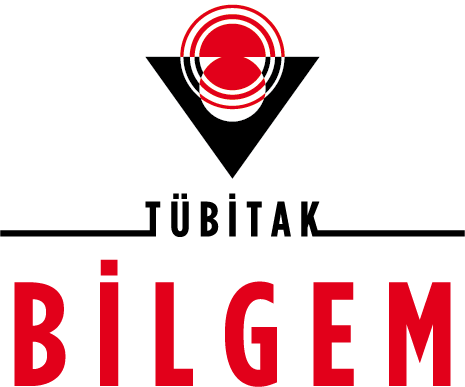CORPORATE
Chronology
From past to present, TÜBİTAK BİLGEM continues to develop and progress in every step it takes in the fields of informatics, information security and advanced electronics; It continues to represent Turkey in the best way in the world and to make our country proud by achieving numerous successes with its works and domestic and national products.
2023
- The first functional flight of the Electronic Support Pod on an F16 aircraft was realized.
- The first phase of the Central Bank of the Republic of Turkey Digital Money System was successfully completed.
- Avionic Information Display Software was developed within the scope of the Turkish Fighter Project.
- AKIS-based TRNC E-ID Card Lifecycle Management System V2 Project was successfully completed and the product was delivered.
- The National Joint Electronic Warfare Data Bank (MMEHBB) Radar Analysis Software was delivered by İLTAREN.
2023
2022
- The first functional flight of the Electronic Warfare Pod on an F16 aircraft was realized.
- Within the scope of the Turkish Fighter Project, an integrated processor unit and avionic interface platform hardware were developed.
- The indigenously developed Safir Posta (Mail) product has started to be used in SAVNET, the network of industry companies.
- JARMOL 5KW KİRPİ Armored Vehicle Mounted Laser System was developed and delivered to the Gendarmerie General Command.
- The 8051 processor was designed and manufactured at YİTAL with 0.25um 5-metal CMOS manufacturing technology. This was the first processor produced in Turkey.
2022
2021
- ESEMOD software was developed to operate on LHD class (TCG Anadolu) ships.
- CMMI V2.0, the Highest Maturity Level Certificate, was awarded to TÜBİTAK for the first time in Turkey.
- YİTAL developed 0.25um 5-metal CMOS and 0.25um 5-metal SiGe BiCMOS chip manufacturing technologies.
2021
2020
- TÜBİTAK BİLGEM Artificial Intelligence Institute (YZE) was officially established in November 2020.
- The Naval Forces Message Operating System Modernization Project was completed and the product was delivered.
- ARMOL 1.25 kW COBRA Wheeled Armored Vehicle Mounted Laser System was developed and started to be used in the field.
- Information and Communication Security Guide was prepared under the coordination of the Digital Transformation Office of the Presidency of the Republic of Turkey with the technical contribution of SGE.
- The Foldable Metal Mine Detector (OZAN) has started to be widely used in the Turkish Armed Forces.
2020
2019
- AQAP-2210 received the Industrial Quality Assurance Level Certificate.
- A contract was signed with the Turkish Air Forces Command to provide engineering support in the field of electronic warfare.
- Within the scope of NATO SPS, Advanced Cyber Security Training was given to Azerbaijan Armed Forces Military Academy, Tunisian Armed Forces and Jordan Armed Forces.
- The first and only high-resolution FOD Detection Radar System (FODRAD) in our country, which can detect foreign matter on the runway for DHMI, was developed and commissioned at Antalya Airport.
2019
2018
- TURKEY finalized the Domestic Biometric Passport Application.
- TÜBİTAK BİLGEM was awarded the “Excellent Publication Award”.
2018
2017
- Blockchain Research Laboratory (BZLabs) was established at BİLGEM.
- TÜBİTAK's YİTAL became a national company.
- TÜBİTAK BİLGEM YTE was rated as CMMI Level 5.
2017
2016
- AKİS BİLET received CIPURSE Certificate.
- UKIS received the Common Criteria Certificate.
- TÜBİTAK BİLGEM developed its first product in the field of medical devices.
- ESYA Version 2.0 received CC EAL4+ Certification.
2016
2015
- AKİS v2.2.8i Version has been awarded the Security Certificate.
- TÜBİTAK BİLGEM UEKAE developed the contactless Smart Card Technology AKİS BİLET v1.0.
- National Smart Card Integrated Circuit (UKTUM), developed by TÜBİTAK BİLGEM Semiconductor Technologies Research Laboratory (YİTAL), received a Registration Certificate from the US Patent and Trademark Office for Active Shield.
- The Electronic Identity Management System, developed by BİLGEM National Research Institute of Electronics and Cryptology (UEKAE), unique to the TRNC, was put into practice.
2015
2014
- The Air Traffic Controller Selection System (atcSES), developed by BİLGEM BTE, won an award in the ORACLE “Duke's Choice Award” competition and was among the top 10 Java-based software in the world.
- AKİS v1.4i version, which is the "electronic passport application" developed by TÜBİTAK BİLGEM National Research Institute of Electronics and Cryptology (UEKAE), has been awarded the Common Criteria (CC) EAL4+ Security Certificate.
- TÜBİTAK BİLGEM Software Technologies Research Institute (YTE) was rated with CMMI Level 4, which is accepted as the reference model for software development organizations.
2014
2013
- An R&D Agreement was signed between TÜBİTAK and NATO.
- A Cooperation Agreement was signed between TÜBİTAK BİLGEM and HAVELSAN on May 8, 2013.
- The Real Time Operating System (GIS) was designed and produced for the first time in Turkey by BTE.
2013
2012
- A Cooperation Protocol was signed between TÜBİTAK and ÖSYM.
- The Radiolink Project designed by TÜBİTAK was implemented.
- The National Railway Signaling System (UDSP) was developed by BTE using domestic technology and put into use in the field.
- The production of SRC155A digital radiolink devices developed by BTE and UEKAE was transferred to the industry through technology transfer. The products started to be used in mobile communication infrastructures in Turkey.
2012
2011
- A cooperation agreement was signed between TÜBİTAK and WMG (Warwick Manufacturing Group).
- AKiS v1.2.2i and AKiS v1.2.2n products received CC certificates.
- TÜBİTAK AKİS electronic passport product received CC Certificate.
- TÜBİTAK Basic Sciences Research Institute (TBAE) was affiliated to TÜBİTAK BİLGEM with the decision of the TÜBİTAK Science Board dated 15 July 2011.
- RAPSİM started accepting applications on March 1, 2011. A protocol was signed regarding the establishment of permission processes regarding the interaction of the establishment of Wind Power Plants (RES) with Communication, Navigation and Radar Systems.
- TAÇEK received NATO approval. TAÇEK (Portable Offline Crypto Device), which has been proposed to meet NATO's need for offline file encryption and has successfully completed NATO's security and operational suitability tests, has been officially approved to protect NATO's information at all levels of confidentiality.
- BTE developed the Handheld Mine Detection System (ETMTS-2) with the ability to detect and display plastic mines.
- The National Simulation System (TRENSİM) was developed by BTE for Virtual Environment Train Driving Trainings.
2011
2010
- TURKEY was officially awarded the title of “Certificate Producer” country in the field of Common Criteria (ISO 15408) on 17 November 2010. As a result, the Common Criteria Certificates of IT (Information Technologies) products evaluated in the laboratory of TÜBİTAK BİLGEM OKTEM, the only Common Criteria Laboratory in Turkey, have international validity.
- TÜBİTAK BİLGEM UEKAE received CMMI Level 3 certificate on 12 November 2010.
- Pardus, the national operating system developed by TÜBİTAK BİLGEM, was among the top 5 in three different categories in the 2010 Readers' Choice Awards given by Linux Journal, one of the most established and prestigious publications in the free software world.
- In order to meet NATO's need for offline file encryption, TAÇEK (Portable Offline Crypto Device) has successfully completed NATO's operational suitability tests.
- Electronic Certificate Management Infrastructure (ESYA) received a certificate from the Turkish Standards Institute (TSE).
- Smart Card Operating System (AKIS), developed by UEKAE, received a certificate from the Turkish Standards Institute (TSE).
- KAYC-S/N has successfully completed the OPEVAL tests conducted by the NATO Information Assurance Technical Center NIATC Unit, in which technical and operational suitability is evaluated.
- A software suite was developed by BTE for the recovery and repair of forensic images.
2010
2009
- Efforts were made to add and install the necessary devices for SiGe HBT BiCMOS technology to YİTAL.
- The functional and environmental tests of the Smart Card IC, with security measures taken, were successfully completed. Distribution started in Bolu, which was chosen as the pilot region for field trials of Smart Card ICs.
- Field trials of the Radon detector produced with the Silicon PIN technique were successfully completed. Special reading circuit design studies were started for the detector.
- Encrypted USB memory device SIR, developed by TÜBİTAK UEKAE, has been approved by NATO/SECAN to encrypt NATO data at all confidentiality levels.
- The KAYC-S/N device has been certified by NATO/SECAN to encrypt NATO communications at all levels of secrecy.
- In April, the next generation TEMPEST PC (miniTPC) with TEMPEST was developed.
- In July, Pardus 2009 was launched.
- The TEMPEST browser was developed in October.
- Turkey's 100% domestic design "Smart Cards" were produced and successfully passed the trials.
- FORMUS products were introduced during the NATO MSA 2009 studies in the Netherlands.
- FORESC successfully passed all tests near and far at the NATO Combined Endeavor 2009 Compatibility Exercise held in Bosnia and Herzegovina.
- 602 encrypted USB memory devices were exported to SIR NATO.
- The Common Criteria Testing Center has completed its first official Common Criteria testing. The product was certified by TSE.
- UEKAE participated as a player controller in the NATO Cyber Defense Exercise held at NATO Headquarters in Brussels in November.
- BİLGEM participated in the CMX (Crisis Management Excercices) crisis management exercise organized by NATO.
2009
2008
- The design of the version with added security measures of the Smart Card IC, designed in accordance with 0.25µm CMOS technology and manufactured abroad, has been completed and work has begun to have it produced abroad.
- The 24V CMOS process has been successfully developed and applied to the production of line driver ICs. This special design was used in the production of line driver ICs. All functional and environmental tests of NTDS cards have been completed.
- Radon detector production process was developed by using Silicon PIN structure at YITAL. Field tests of the detector have started.
- The ISDN-PRI device has been certified by NATO/SECAN to encrypt NATO communications at all levels of secrecy.
- AKİS, Meteosay and SIMA trademarks were registered.
- For the first time in Turkey, Eurocrypt 2008 was hosted by TÜBİTAK UEKAE.
- The National Offline Crypto Device MILOF-1 has been approved by NATO/SECAN to encrypt NATO communications at all levels of secrecy.
- Won the NATO Online Spectrum Management Database (ARCADE) tender.
- In June, Pardus 2008 was launched.
- The crypto algorithm OCEAN has been validated by NATO/SECAN to encrypt NATO communications at all levels of secrecy.
- UEKAE received CMMI Level 3 Maturity Certificate.
- Information Security Gate started its services at http://www.bilgiguvenligi.gov.tr
- The Common Criteria Test Center received a Permanent License Certificate for Common Criteria Assessments from the Turkish Certification Authority, TSE.
- Participation in the cyber security exercise called NATO Cyber Defense Exercise.
- Participated in the National Crisis Drill as a player, and encrypted communication between critical institutions throughout the exercise was provided by UEKAE.
- BOME 2008 Exercise was held under the coordination of UEKAE in order to ensure the coordination of corporate computer incident response teams.
- Onboard Embedded Simulation System Network for Educational Purposes NetWaSiF -the world's first flying simulator fleet- was held with the participation of BTE.
2008
2007
- After YİTAL's research, 0.35 micron level integrated circuit was produced.
- In March Pardus 2007. 1 Felis Chaus, in July Pardus 2007. 2 Caracal Caracal, in November Pardus 2007.3 Lynx lynx came into service.
- The laboratory prototype of GEMRAD was produced. GEMRAD is the first LPI surveillance radar developed with national resources in Turkey, which can provide the performance of the LPI-enabled Surveillance Radar in the MİLGEM Project of the Naval Forces Command.
- Turkey's LPI radar, developed entirely with “national” means, was exhibited at the IDEF '07 Industry Fair.
- The Marker Test Device, which was developed by TÜBİTAK UME and measures the density of the MARKER, which is used to mark the fuel, was developed and started to be used successfully.
- Smart cards operating under the Smart Card Operating System (AKIS) developed by UEKAE have started to be used in e-signature applications.
- The world's most important glass manufacturer, the French company Saint Gobain, has taken a decision in principle to use Continuous Tension and Thickness Control Devices in Flat Glasses, which are UEKAE products, in all its factories. The first device was installed and put into use in Saint Gobain's factory in Mexico.
- Received the AQAP-160 Industrial Quality Assurance Level Certificate.
- Received ISO27001 Certificate.
- In addition to the standard 0.35µm CMOS technology, SiGe HBT BiCMOS technology development studies were started.
- Smart Card integrated circuit design in accordance with 0.25µm CMOS technology has been successfully completed. The Smart Card produced includes the original 8051 microprocessor, DES, 3DES, AES and RSA crypto blocks, 64K EEPROM and 6K SRAM.
- The 20V CMOS production process developed in YITAL was successfully applied to the line driver IC sample production designed.
- The FORESC device was deemed worthy of the grand prize in the “Innovation and Creativity Awards” competition organized by TESID.
- In accordance with the 2007/16 Prime Ministry Circular, TÜBİTAK UEKAE transformed the Insurance Card Project into the Turkish Identity Card Project.
- FORESC was used in NATO Phoenix Express 2007 exercise in the Atlantic Ocean.
- FORESC participated in the NATO Combined Endeavor 2007 exercise held in Germany.
- The FORBIS system started to be used as a messaging system on ships of the Naval Forces Command.
- The HELIS system has started to be used in helicopters and ships of the Naval Forces Command.
- For the first time in the world, the Four-Point Reflection and Transmittance Coefficients Continuous Meter System in Coated Glass was developed and installed at the Trakya Glass Factory.
- It was decided to carry out high-level passport and visa control procedures at Turkey's border gates (air, sea and land) with the FORENSIC XP-4010 D device. In the first stage, devices were started to be used at all air border gates.
2007
2006
- Data Encryption Device (MİLON-4A) and Secure Data Communication Device (FORESC) over HF/UHF/VHF were used in MAPEX'06 Exercise.
- With the use of the FORESC device, secure communication was achieved between a Russian ship and a NATO ship for the first time. The success achieved was described as a "historical event" with a letter of thanks sent by CC-MAR NAPLES.
- FORESC, MİLON-4A, Crypto Key Loading Device (KAYC-10) and Crypto Key Reading Device (KAOC-8) were preferred and purchased by NATO.
- Participated in NATO Steadfast Cathode 2006 Integration and Compliance Exercise with FORESC.
- The TSK-3 device has been approved by NATO/SECAN to encrypt NATO communications at all levels of secrecy.
- The industrial model of SAMRAD, the first radar capable of performing the coastal surveillance function of the Coast Guard Command, was produced.
- Received Industrial Quality Assurance Level Certificates AQAP-2110 and AQAP-2130.
- TÜBİTAK UEKAE started the Insurance Card Project with SSK.
- FORECS participated in the CWID 2006 exercise held in Norway.
- The protocol regarding the realization of the National Marker Project in Fuels was signed by the Energy Market Regulatory Authority and the TÜBİTAK Presidency on 17.3.2006.
- The first Online Fault Detection Machine in the world for automobile glass with a resolution of 50 microns was developed and installed at the Trakya Otocam Factory.
- The National Information Systems Security Program Project was initiated.
- I. Public Institutions Information Technologies Security Day was held in Ankara by UEKAE.
2006
2005
- The Public Certification Center (KSM) was awarded the BS7799-2 certificate.
- The Common Criteria Test Center within UEKAE was accredited by TÜRKAK according to the 17025 standard.
- The open source free software Pardus was introduced and the distribution of the working CD was started.
- Participated in the National Ship (MİLGEM) Project as a contractor.
- The first certificates were distributed as the Public Certification Center (KSM / ESHS).
- The MİLON-7 crypto device was developed and first delivered.
- The TSK-2 device has been approved by NATO/SECAN to encrypt NATO communications at all levels of secrecy.
- The KAOC-8 device has been certified by NATO/SECAN to encrypt NATO communications at all levels of secrecy.
- Radio Spectrum Analysis and Management System MARSsys was used in Phoenix Endeavor 2005 exercise.
- The 0.7µm CMOS IC manufacturing process was developed and successfully applied to ASIC manufacturing.
- The ISDN Security Management Center product prepared for NATO was tested by OKTEM Laboratory and passed the EAL 4 Level tests.
- The FORESC device started to be used as the only data communication device in BLACKSEAFOR Exercises.
- The SPEKTRUM-2 device was deemed worthy of the grand prize in the “Innovation and Creativity” Awards Competition organized by TESID.
- The National Marker Application Project was developed to prevent fuel smuggling. The National Marker Application, which prevents fuel smuggling for the first time in the world, was introduced at the Board of Directors of the Energy Market Regulatory Board (EMRA). After the failure of four tenders held by the end of 2005 and attended by foreign companies, the principle decision was taken to run the EMRA National Marker Project by TÜBİTAK.
2005
2004
- BİLGEM received the TESID 2004 INNOVATION Award.
- TÜBİTAK UEKAE was invited to the ISDN-BRI Crypto Device and Management System Tender opened by NATO.
- Received AQAP-130 and AQAP-150 Industrial Quality Assurance Level Certificates.
- The “PENGUEEN OF THE YEAR” Award was received for the most successful free software project given by the LINUX Users Association.
- A GIS software developed at UEKAE was selected first in the “Best VBA Practice” category at the 22nd ESRI International User Conference.
- 2 projects were accepted to the EU 6th Framework Programs.
- Participation in the SAF-2004 fair.
- Became a member of Turkish Quality Association KALDER.
- The first export of the MST-2 device took place. The product was sold to the People's Republic of China.
2004
2003
- The KAYC-10 device has been certified by NATO/SECAN to encrypt NATO communications at all levels of secrecy.
- The MILON-4A device has been certified by NATO/SECAN to encrypt NATO communications at all levels of secrecy.
- National and NATO Facility Security documents were obtained.
- EMI / EMC Test Center is accredited by the Turkish Accreditation Agency (TÜRKAK).
- Received the AQAP-110 Industrial Quality Assurance Level Certificate.
- BİLGEM took the third place in the NAR-BAND VOICE CODING competition held among NATO countries.
- The first international patent of TÜBİTAK and UEKAE in the field of optoelectronics was obtained.
- Onboard Aircraft Embedded Simulation System for Educational Purposes, WaSiF, the world's first flying simulator, was realized with the participation of BTE.
2003
2002
- The ISDN-BRI crypto device developed at UEKAE has been approved by NATO/SECAN to encrypt NATO communications at all levels of secrecy. It was the first Turkish device to receive NATO-SECAN approval.
- BİLGEM was invited by the Netherlands-INTERPOL to the “10th Currency Counterfeiting” and “5th Fraudulent Travel Documents” Conferences held in Amsterdam. The MST-1 device was proven to contain new technology and earned the right to use the INTERPOL logo.
- The first FORENSIC XP-4010 device was sold to the Criminal Police Laboratory of the General Directorate of Security.
2002
2001
- Microelectronics 1,000 class laboratory infrastructure was completely renewed in 10 and 100 class conditions in a way to follow up-to-date technologies and was strengthened with new devices.
- The first original 1.5 µm CMOS integrated circuit was designed and produced for the needs of the institute.
- The MST-1 device was exhibited at the 5th IDEF 2001 International Industry Fair held in Ankara in September 2001.
2001
2000
- A contract was signed with the Ministry of National for the establishment of the Common Criteria Test Center.
- First national cryptographic algorithm approved by NATO/SECAN to encrypt NATO communications at all secrecy levels.
- The first sale took place in the free market. “SPEKTRUM” device was sold to SANKO Holding, ISKO DOKUMA AŞ.
2000
1999
- EMC / TEMPEST Test Center completed.
- UEKAE designed and produced the first original 3 mm CMOS IC for internal needs.
- Advanced Technologies Research Group (İLTAREN) was established within UEKAE.
- First participation in the international fair; ITMA '99 Fair, which is held in Paris every 2 years, was held with the "Online Quality Control Machine for Fabrics".
1999
1998
- National Research Institute of Electronics and Cryptology (UEKAE) was separated from Marmara Research Center (MAM) and affiliated to TÜBİTAK Presidency.
- Participation in the first National Fair: EUREKA Brokerage Event was attended with the “SPEKTRUM” device.
1998
1997
- On March 7, 1997, the “TAFICS Crypto System Development Project” was signed with the MSB.
- The establishment of the Cryptographic Test and Design Center has been completed.
1997
1996
- A project has been initiated that aims to produce ICs designed by university students at YİTAL. The project, which was carried out jointly with ITU, METU, Boğaziçi University, Yıldız Technical University and Bilkent University, under the name of “TÜBİTAK-University Microelectronics Collaboration Project (TÜMIP)”, was aimed to be extended to other universities in the following years.
1996
1995
- The department was transformed into an institute called the National Electronics and Cryptology Research Institute (UEKAE).
- A contract was signed with the Ministry of National for the establishment of the EMC / TEMPEST Test Center.
- Within the framework of NATO Science for Stability Program, a new project called “1.5 mm CMOS ASIC Fabrication Technology” was started with the support of domestic industrial organizations.
1995
1994
- A contract was signed with the Ministry of National for the establishment of the Cryptographic Test and Design Center.
1994
1991
- The unit was converted into the Electronics and Semiconductors Technology Division.
1991
1988-1991
- The NATO-TU-MICROFAB Project, which was carried out with the financial support provided within the framework of the NATO Science for Stability Program, was completed. At YITAL, the technology required for the production of CMOS/VLSI ICs was developed without paying any money for know-how.
1988-1991
1987
- The first crypto device was delivered.
1987
1984-1986
- Techniques developed within the scope of the project to reduce noise in sound recordings were successfully applied to the sound recording of Atatürk's 10th Anniversary Speech.
1984-1986
1983
- Semiconductor Technology Research Laboratory (YITAL) was established in order to provide knowledge in the field of microelectronics technology, to carry out research and development studies for the industry in this field, and to produce strategically important integrated circuits.
1983
1980
- A laboratory prototype of the 30-channel PCM Communication System was developed and mutually tested, successful results were obtained.
1980
1979
- EAU took part in the Telecommunication Networks Planning and Optimization Project carried out by European countries upon the request of the PTT General Directorate and the Ministry of Foreign Affairs with the decision of the Council of Ministers.
1979
1978
- 2/8 Mbit/s 11 GHz Radiolink prototype was produced for PTT ARLA (TELETAŞ).
- An "Underwater Telephone" prototype was developed for the Naval Forces Command - Gölcük Shipyard Command, which enables communication between ships and submarines.
- For the Naval Forces Command, the Anti-Aircraft and Surface Target Fire Control System Project was carried out. The systems produced at the end of the project carried out jointly with the Gölcük Shipyard Command were installed on 7 ships and put into use.
1978
1975-1976
- The production prototype of 1200 Baud Modem, the first of various modems to be built for the PTT General Directorate, was realized and PTT ARLA was produced.
1975-1976
1974
- Crypto device development work has begun.
1974
1973
- A project contract worth 3 million TL was signed with the General Directorate of PTT for the development of 30-channel PCM (Pulse Code Modulation) communication systems. This project is the biggest project signed in MAM up to that date in terms of quantity and scope.
1973
1972
- Electronics Research Unit (EAU) moved from Ankara to Marmara Research Institute (MAM) campus in Gebze and continued its work within MAM.
1972
1968
- Electronic Research Unit (EAU) was established and studies were started with 5 researchers under the chairmanship of Prof Dr. Yılmaz Tokad.
1968











